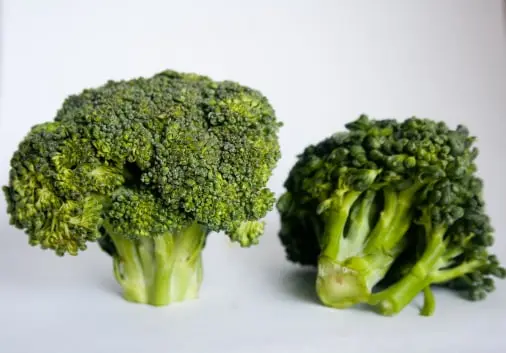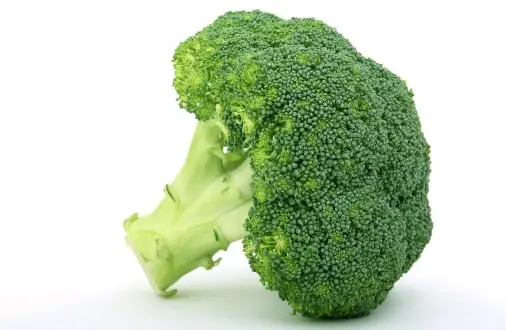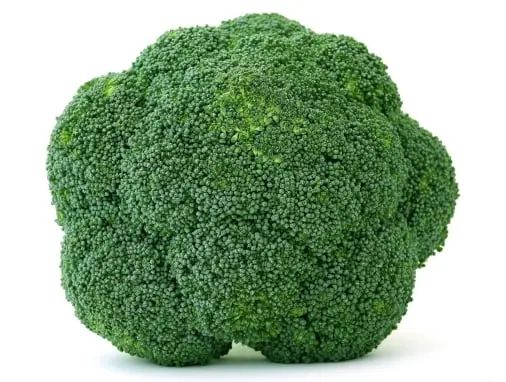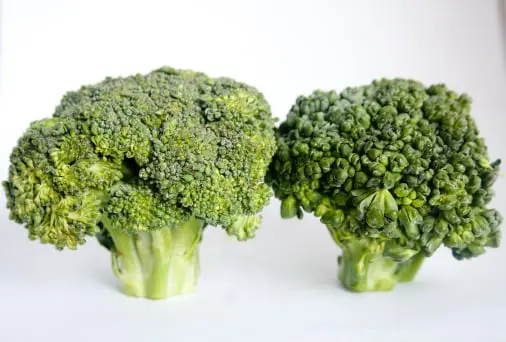Broccoli traceability app:
Broccoli traceability app for packing processing inventory control, sales, traceability: reduced broccoli waste, better broccoli traceability processes...

Broccoli Traceability during production
View Traceability App Specifications.
Broccoli packing processing app for inventory control, sales, traceability: reduced broccoli waste, better broccoli packing processes...
Broccoli packing & processing, inventory QC traceability by farmsoft reduces waste and increases productivity in broccoli packing businesses.
Farmsoft delivers reduced waste in the broccoli packing traceability & quality control, processing, storage, distribution phases. By enforcing best practices, FIFO, inventory expiry monitoring, and easy stock takes to minimize waste and maximize packing profit. Use bar-code managed inventory, labeling, 3D pallet storage, to help reduce waste.
Broccoli packing processing inventory control sales traceability
BROCCOLI PACKING
Conduct recalls in seconds, with full confidence of accuracy and reliability. Minimize risk by ensuring accurate traceability is automatically captured. Pass audits with ease & reduce compliance costs using farmsoft's traceability guidelines. Trace fresh produce up and down the supply chain, over multiple traceability hops. Instantly produce farm records and any other farm traceability records if you optionally use our farm solution.
REDUCE ADMINISTRATION COSTS FOR BROCCOLI PACKING
Minimize your administration costs with automatic paperwork generation. Ensure accuracy of paperwork by having necessary documentation (invoice formats, export documents, transport documents etc) automatically generated based on the needs of the specific customer - ensuring timely and accurate documentation. No more rejected orders because of bad documentation accompanying a shipment. Food traceability software made easy!
CONSISTENT QUALITY CONTROL FOR BROCCOLI PACKING
Guarantee consistent, accurate, and efficient quality control is performed at any part of the fresh produce handling life-cycle; including during delivery, pre processing, post processing, and dispatch. Create quality control tests based on each customers requirements, and even create a daily factory hygiene test, employee performance tests and more. Accurate quality control helps to improve customer confidence and quality perception. Easily follow fresh produce quality control & fresh produce inventory guidelines.
BETTER PRODUCTION PLANNING & DISPATCH FOR BROCCOLI PACKING
Monitor orders, assign orders to specific pack-houses (you can have unlimited processing sites in farmsoft), and allow micro monitoring of each production lines output requirements using dashboards. The dashboards ensure the correct products are produced at the correct time to fill orders. Dispatch teams are given details on their mobile device (or PC/Mac) and scan pallets onto orders. Administration teams can see orders are picked and ready for dispatch, and are presented with the correct documents for printing. All of these features result in improved accuracy of both production and dispatch processes.

Broccoli packhouse hygiene checklist
OPTIONAL FARM SOFTWARE INTEGRATION FOR FARM TO PLATE MANAGEMENT SOLUTIONS
Optionally use farmsoft Farm Management software with our Post Harvest solution. Using both solutions provides an end to end solution from field to plate. Farm Management by farmsoft delivers full farm record keeping, farm inventory, cost monitoring, budgeting, best practice enforcement, and adherence to international farming standards. Use Farm Management by farmsoft to manage your own farms, or even hundreds of external farms that supply your fresh produce company.
Broccoli processing line
Basic or complete, fully integrated for freshly cut, packaged, ready-to-use broccoli. Different optional and fully customised levels of automation depending on preference and requirements. Advice and turnkey delivery.
Benefits
Single supplier
Full line incorporating all processes
We include reception, preparation and washing and even packaging
Personalised advice from experts
Mechanical, electrical and electronic design, and programming
Turnkey project
Inquire
Description
Complete line for processing broccoli, including raw material reception; feeding; automatic floretting machines; inspection conveyors; machinery for washing, draining, spin drying, sorting by size, and packaging (in collaboration with EFS Packaging www.efs-packaging.com, Spanish industry leader).
Backed by our ample experience in broccoli processing, we design the machinery according to your needs with production levels starting at 1,000 kg/ hour. We listen to your processing needs, offer advice and assist you in your choice of the best equipment for your specific requirements. We design and manufacture the machinery, install and start up the machinery and offer post-sales service.
We do not limit ourselves to offering a specific product, we propose and execute the global solution to your problem, improving the efficiency of your production process.
Line fully integrated into your facility, adapted to your production needs and available space.

Broccoli Traceability management
"We’ve been working with Ait for five years, in which time they have continuously shown their expertise and leadership in the post-harvest processing of vegetables."
Broccoli packing & processing, food service business management software for improved food safety & reduced waste. Broccoli packing & processing, inventory QC traceability by farmsoft reduces waste and increases productivity in broccoli packing businesses.
"Every year, we pack around 25 million kilos of broccoli and cauliflower"
This year, the Murcia-based firm Agrícola Santa Eulalia is turning 25. The company was founded by brothers Francisco and Juan Mula, whose ancestors had been active in Spanish cultivation for many years, and the next generation (three sons and a daughter) has already joined the company. The brothers have gained recognition with their own brand: Mr. Broko.
Broccoli packing processing inventory control sales traceability
"Our main export markets are the United Kingdom, Germany, Belgium, the Netherlands, Austria, Portugal and Canada. 95% of our volume is exported, mainly to retail customers. Also, we started exporting to the Middle East 12 years ago. Back then, we were pioneers in this, but now this market has become more competitive," says sales manager Pedro Garcia.
Agrícola Santa Eulalia has also been supplying Spanish retailers for years with Spanish cauliflower and broccoli. The company has an area of 1,500 hectares devoted to broccoli, cauliflower and other brassicas cultivation. Grapes and early nectarines are also part of the product range. "This year, we have also handled a lot of white cabbage, and we sell a lot of broccoli 'on ice' in order to guarantee its freshness when shipped to far-off destinations," said Pedro.
Broccoli packing processing inventory control sales traceability
Machine Harvest Broccoli
New broccoli plant suitable for the industrial processing of heads and florets
This present invention deals with a new type of broccoli plant suitable for the industrial manufacture of broccoli heads and florets. This invention relates to broccoli plants producing a head that is flat, comprises multiple individualized florets and protrudes above the leaves making it easy to harvest by machine, allowing the use of heads and florets for the manufacture of processed broccoli and/or packaged food products.
Broccoli is a member of the Brassica family like cauliflower and cabbage, its botanic name being Brassica oleraceae L. var.italica. Broccoli is native of the Mediterranean region and particularly grown in Italy for centuries. Indeed, it was considered as favorite vegetable by the Romans, who initially ate a purple sprouting broccoli that turned green when cooked.
Broccoli has since been developed by selection and crossing to obtain varieties such as Calabrese (originating from the area of Calabria) or other broccoli varieties which have more and more improved qualities.
Broccoli is mostly marketed and consumed fresh; the part of the plant that is eaten is actually an undeveloped flower head hereinafter named head comprising many tiny buds crowded onto it.
Heads are harvested at maturity when they are an adequate size and have florets with a uniform green color.
Due to the architecture of the plant, broccoli harvesting is done manually when the head has reached maturity. The main stem is cut and the head thus obtained is cooled and marketed as fresh product. This manual harvesting is expensive in terms of labor cost and may represent up to 60% of the total labor costs for producing broccoli.
The use of mechanical harvesting solutions have been attempted but, because of the importance of leaf content and the deep burying of the head within those leaves, the jamming of the cutting equipment is an issue in the development of any mechanical equipment for harvesting broccoli.

Broccoli Supplier Traceability
Broccoli is mainly marketed fresh, as fresh heads. There is however a trend for individualized florets packed in bags in order to address a need for convenience and to provide the consumer with ready to eat or ready to cook vegetables. This kind of packed fresh broccoli florets allows the consumer to cook broccoli conveniently without the need to clean broccoli heads, to cut florets one after the other and eventually to dispose of non-edible broccoli parts. However, the cost of the processing of broccoli heads for producing individualized florets after harvesting is a serious issue.
Broccoli is also increasingly marketed as frozen, mainly in the form of individualized florets, either alone or in combination with other vegetables in ready to cook mixes. In those cases as well, there is a need to handle and process the broccoli heads after harvesting as quickly as possible in order to preserve all the organoleptic qualities of the product. Effects of high-pressure processing (HPP, 100–600 MPa for 3 min at 30 °C) on the glucosinolate content, conversion to isothiocyanates, and color changes during storage in fresh broccoli sprouts were investigated. A mild heat treatment (60 °C) and boiling (100 °C) were used as positive and negative controls, respectively. Glucosinolates were quantified using liquid chromatography–mass spectrometry, and isothiocyanates were quantified using high-performance liquid chromatography–photodiode array detection. A formation of isothiocyanates was observed in all high-pressure-treated sprouts. The highest degree of conversion (85%) was observed after the 600 MPa treatment. Increased isothiocyanate formation at 400–600 MPa suggests an inactivation of the epithiospecifier protein. During storage, color changed from green to brownish, reflected by increasing a* values and decreasing L* values. This effect was less pronounced for sprouts treated at 100 and 600 MPa, indicating an influence on the responsible enzymes. In summary, HPP had no negative effects on the glucosinolate–myrosinase system in broccoli sprouts.
There is still a need for broccoli plants that produce head and/or florets that can be harvested and processed with the minimum hand-labor input in order to minimize the costs associated with the harvesting and/or processing of those heads and/or florets, particularly for the manufacture of individualized florets. This present invention aims at solving this problem and is addressing the need of providing a broccoli plant that produces a head that can be harvested by machine and florets that can also be harvested and/or processed by machine with minimal hand labor.
Accordingly, this present invention provides a cultivated broccoli plant having, at the harvestable stage, a head comprising a primary stem on which are branched secondary stems with florets at their top, characterized in that the florets are comprised within a plane substantially parallel to the ground.
Another plant provides an assembly of broccoli heads, particularly isolated broccoli heads, comprising at least two broccoli heads, each comprising a primary stem on which are branched secondary stems with florets at their top, characterized in that the florets are comprised within a plane substantially parallel to the ground when the head stands in the upward position.
The present invention allows a reduction in most of the harvesting and processing issues and costs associated with them.
A tour of the packing station in Totana makes it clear that there is a multitude of customers and packaging options. The fruits and vegetables are packed by Agrícola Santa Eulalia in three packing locations. "We grow our own crops in, among others, Murcia, Albacete, Granada and Campo de Cartagena. Thanks to our own cultivation, we can guarantee a stable supply to our customers. Every year, we pack around 25 million kilos of broccoli and cauliflower," says Pedro.
The clientele features all kinds of customers, from the top retailers to discounters. "We have the volume to serve the entire retail spectrum," says the sales manager. According to Pedro, the cultivation has had a fairly normal development this year, with few excesses. "There is increasing competition from other areas in Spain, but fortunately, Murcia region still concentrates around 85% of total growing area."